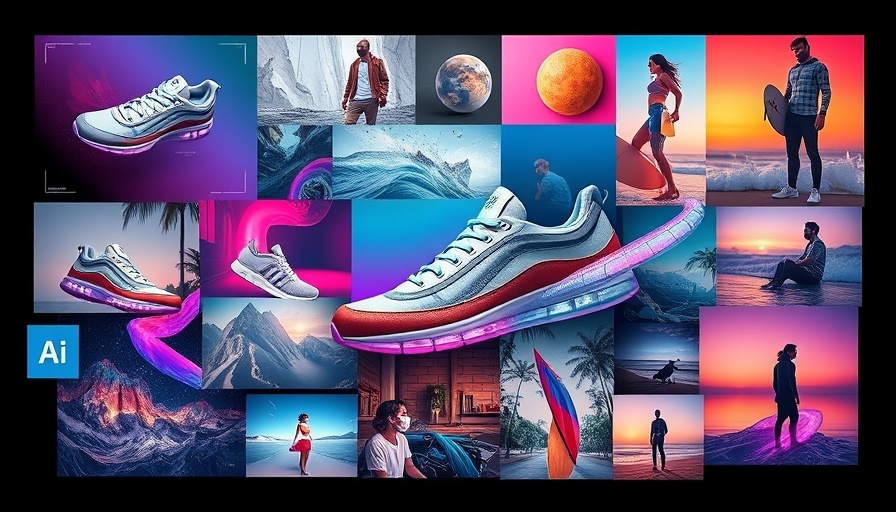
Wix's Game-Changing AI Tool: Is Wixel Your Next Best Ally?
Wix has unveiled a new computer-powered design platform, **Wixel**, that promises to give users—regardless of design experience—the ability to create studio-grade visuals in mere minutes. Imagine a versatile combination of Canva, Photoshop, and AI chatbots rolled into one. Dubbed as an effort to democratize design, Wixel aims to bridge the gap for small business owners, influencers, and content creators eager to elevate their brand visuals without the steep learning curve.
A Striking Look at Wixel's Features
Wixel is built on an AI-driven workflow, allowing users to upload their photos—such as product images—and perform actions like instant background removal, text adjustments, and branding applications—all within a unified interface. This all-in-one approach is ideal for companies juggling multiple design tools to complete simple tasks. The initial demonstrations of Wixel have shown impressive results, indicating its potential to deliver high-quality outputs in record time.
The platform's user interface is clean, beginner-friendly, and features a diverse range of AI-generated visual styles. For franchisors who are looking to maintain brand consistency across multiple locations, Wixel can serve as a powerful companion—offering resources for various branding needs without requiring extensive training.
Who Can Benefit from Wixel?
The target audience for Wixel is predominantly non-designers, making it particularly useful for franchise owners, small business entrepreneurs, and social media content creators. These groups often need quick and appealing visuals for promotions and online engagement, without wanting to invest hours mastering advanced design software. Wixel’s freemium model allows users to experiment freely with no upfront cost, making it accessible for everyone.
However, while Wixel is promising for novices, seasoned designers or those involved in high-complexity branding tasks may find it lacking in depth. Such users may regard Wixel as a supplementary utility rather than an essential tool, especially as they require nuanced control over their brand's creative direction.
A Leap toward Tomorrow's Design?
In discussing Wixel's capabilities, Avishai Abrahami, Co-Founder and CEO of Wix, stated, “AI is the foundation of Wixel.” This sentiment highlights the company's commitment to simplifying design even further. As tools like Wixel emerge, the landscape of brand creation is shifting—providing resources that eliminate barriers to entry for creative endeavors.
Yet, as with many AI tools today, there’s an inherent risk in narrowing the scope of design aesthetics. With Wixel’s ease of use potentially leading to uniform designs, brands might unintentionally find themselves in an “aesthetic echo chamber,” producing visuals that lack individuality and unique identity.
Next Steps for Your Brand
Franchisors have a unique opportunity with innovative platforms like Wixel to enhance their marketing strategies while cutting costs and improving consistency. As you explore the potential of this AI-driven tool, consider how it can support and streamline the visual representation of your brand. Embrace the democratization of design while staying true to your brand’s core aesthetics.
While Wixel is still evolving—promising to introduce features such as video and story creation in the near future—it can already substantially impact how franchises approach visual content. As this platform continues to develop, keep a keen eye on its future updates that may further augment its utility.
 Add Row
Add Row  Add
Add 




Write A Comment